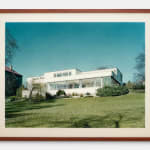

Thomas Ruff b. 1958
h.t.b. 02, 1999
Chromogenic colour print mounted on Diasec in artist's wooden frame
187 x 236.2 cm. (73 5/8 x 93 in.)
Edition of 5 + 2 AP (#4/5)

